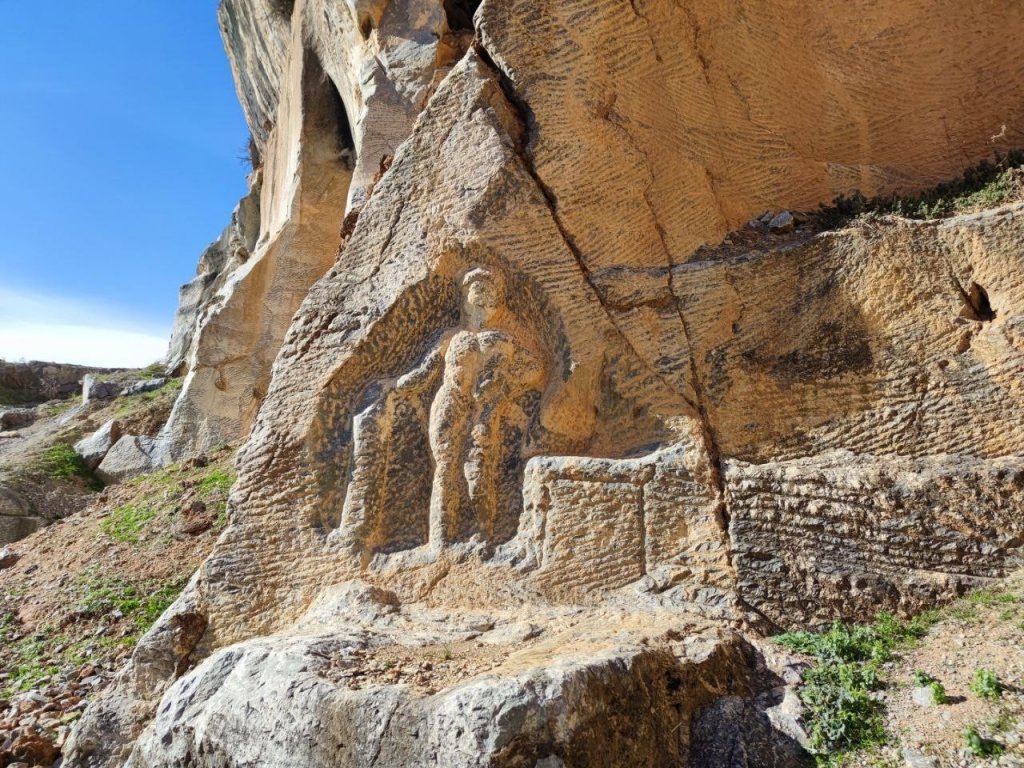A unique archaeological monument located near the modern-day town of İznik in northwestern Türkiye is facing a serious threat of disappearance. Carved into the face of a limestone rock approximately 1,800 years ago, this Roman-period Hercules relief continues to fascinate visitors with its historical and symbolic significance.
The relief is situated in an ancient stone quarry known as Deliklikaya. Scholars believe that the Hercules figure, known as Herakles in Greek mythology, was carved not only as a work of art but also as a spiritual protector of the quarry workers. The site likely served as both a workplace and a sacred space during the Roman and Byzantine periods.
In the relief, Hercules is depicted holding a club in his right hand—symbolizing strength—and the severed heads of a multi-headed serpent in his left, referencing one of his legendary labors. Next to him, a carved altar suggests that this location may have been used for offerings or prayers by laborers seeking protection or strength.
According to Dr. Ayşe Tuba Ökse, a scholar of Roman sacred landscapes in Anatolia, “Reliefs like this one provided both divine inspiration and a psychological anchor for workers in physically demanding environments.”

Despite being registered as a protected archaeological site since 1990, the relief now suffers from a lack of regular maintenance, environmental erosion, and damage from nearby agricultural activities, particularly the disposal of olive processing waste. Conservation experts warn that without immediate action, this remarkable piece of Roman-era rock art may be permanently lost.
The Hercules relief is a rare example of how ancient civilizations blended mythological belief with everyday life. Preserving such artifacts is crucial not only for Türkiye’s cultural heritage but also for understanding the complex spiritual lives of Roman laborers.
Urgent conservation and restoration efforts are needed to ensure that this ancient icon of strength and resilience continues to inspire future generations.





